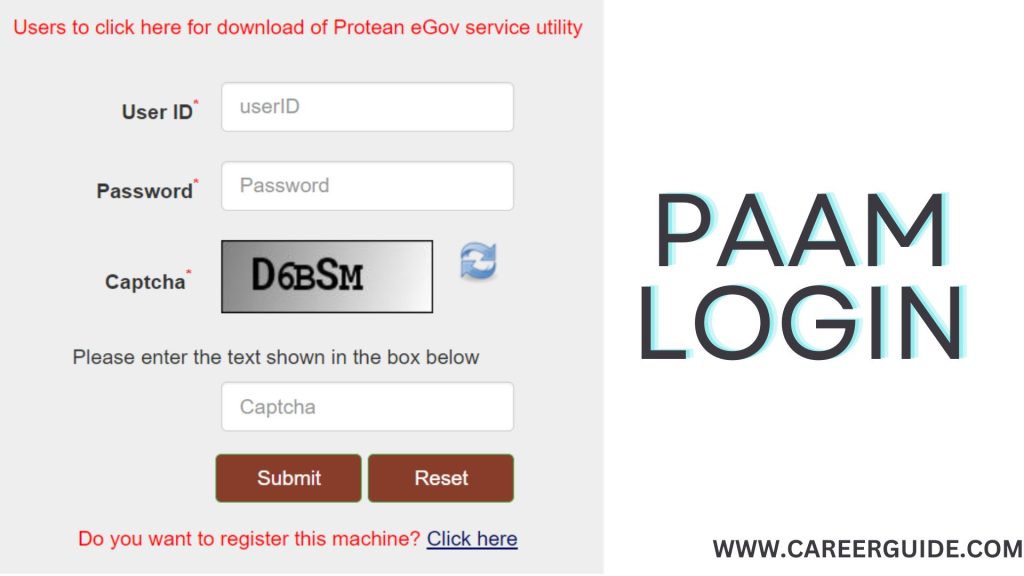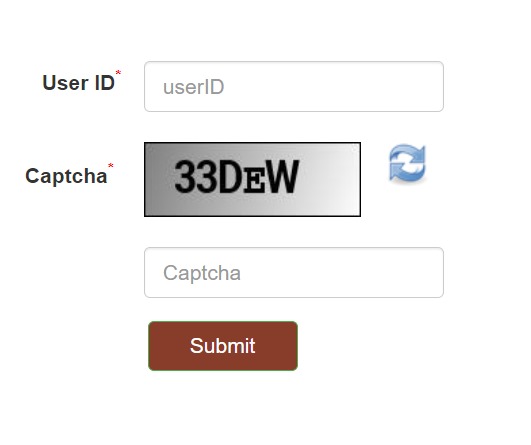In state-of-the-art virtual age, security and user experience are paramount worries for any website or software. As generation evolves, so do the strategies of authentication. One such approach gaining traction is Paam (Password as a Method) login. In this comprehensive guide, we’ll delve into the world of Paam login, exploring its advantages, implementation techniques, and its implications for the future of web authentication.
- Overview of Paam Login
- Step-by-Step Guide login process Paam Login
- Benefits of Implementing Paam Login
- Enhancing Security Through Paam Login
- Improving User Experience with Paam Login
- Paam Login vs. Traditional Authentication Methods
- Best Practices for Implementing Paam Login
- Troubleshooting Paam Login Issues
- Frequently Asked Questions (FAQs)

Overview of Paam Login
| Aspect | Description |
|---|---|
| Definition | Password serves as a direct method for authentication. |
| Implementation | Eliminates the need for password hashing. |
| Security | Reduces the risk of password breaches. |
| User Experience | Simplifies the authentication process. |
| Scalability | Scales efficiently with growing user bases. |
| Best Practices | Use HTTPS, implement rate limiting, conduct audits. |
| Comparison | Offers advantages over traditional methods. |
| Future Trends | Represents an evolving trend in authentication. |
| Website | https://www.onlineservices.nsdl.com/paam/ |
Step-by-Step Guide login process Paam Login
| Step | Description |
|---|---|
| 1. User Input | The user enters their username and password into the login form on the application interface. |
| 2. Submit Credentials | Upon submitting the login form, the application sends the entered credentials to the server. |
| 3. Server Validation | The server receives the user credentials and validates the username against the stored records. |
| 4. Retrieve Password | If the username is found, the server retrieves the corresponding password from the database. |
| 5. Password Comparison | The server compares the retrieved password with the password entered by the user. |
| 6. Authentication Logic | Using Paam login, the server directly uses the entered password for authentication. |
| 7. Successful Login | If the entered password matches the stored password, the server considers the login successful. |
| 8. Session Creation | The server creates a session for the authenticated user to maintain their login status. |
| 9. Redirect to Dashboard | Upon successful login, the user is redirected to the dashboard or designated landing page. |
| 10. Access Granted | The user gains access to the application’s features and functionalities. |
| 11. Session Maintenance | The server maintains the user’s session throughout their interaction with the application. |
| 12. Logout | When the user chooses to logout, the server destroys the session, logging the user out securely. |
Benefits of Implementing Paam Login
Enhanced protection: Paam reduces the chance of password breaches as passwords are not stored in retrievable formats.
Simplified authentication process: With Paam, there may be no want for complex password hashing algorithms.
Improved user experience: Users admire the simplicity and protection of Paam login, main to higher satisfaction costs.
Scalability: Paam can easily scale with growing person bases without compromising safety or overall performance.
Reduced development complexity: Implementing Paam calls for fewer resources compared to traditional authentication techniques.
Lower protection overhead: With fewer components worried, maintaining Paam systems is less difficult and extra cost-powerful.
Compatibility: Paam can be incorporated into existing authentication structures with minimal disruption.
Faster login instances: Eliminating password hashing hastens the authentication process, resulting in quicker login times.
Mitigated password-associated dangers: Since Paam doesn’t depend upon saved passwords, the chance of password-related assaults is substantially reduced.
Compliance readiness: Paam aligns with contemporary protection requirements and may assist organizations meet compliance requirements correctly.
Enhancing Security Through Paam Login
Elimination of password hashing: Paam eliminates the need for storing passwords in hashed formats, reducing the risk of password breaches associated with hashed password databases.
Direct password usage: With Paam, passwords are used directly in the authentication process, minimizing the chances of password interception or unauthorized access.
Reduced attack surface: Since passwords are not stored in retrievable formats, there are fewer opportunities for attackers to exploit vulnerabilities in the authentication system.
Prevention of password database breaches: Paam mitigates the risk of password database breaches, as there are no stored passwords that can be targeted by attackers.
Protection against password-related attacks: By bypassing password hashing, Paam reduces the susceptibility to password cracking and brute force attacks.
Enhanced resistance to password sniffing: Paam decreases the risk of password sniffing attacks, as passwords are not transmitted over the network during authentication.
Secure authentication process: Paam ensures that the authentication process remains secure by directly using the password for verification without relying on intermediary steps.
Compliance with security standards: Paam aligns with modern security best practices and can help organizations meet regulatory compliance requirements effectively.
Increased user trust: The enhanced security provided by Paam login instills confidence in users, leading to greater trust in the authentication system.
Proactive security measures: Implementing Paam demonstrates a commitment to proactive security measures, reassuring users and stakeholders about the safety of their credentials.
Improving User Experience with Paam Login
Simplified login manner: Paam eliminates the need for users to bear in mind complicated passwords or undergo multi-step authentication tactics, streamlining the login experience.
Intuitive authentication: With Paam, users can immediately use their passwords to authenticate, making the process greater intuitive and acquainted.
Reduced friction: By minimizing the number of steps required for authentication, Paam reduces friction and frustration, leading to a smoother person experience.
Quick get admission to: Paam login enables quicker get admission to to the platform or software, as customers can authenticate with out the delays related to conventional authentication techniques.
Mobile-pleasant: Paam can be carried out with cellular-pleasant interfaces, allowing users to access their money owed easily from any tool.
Single-step authentication: Paam frequently calls for most effective a unmarried step for authentication, removing the want for users to enter additional verification codes or go through secondary authentication strategies.
Paam Login vs. Traditional Authentication Methods
| Aspect | Paam Login | Traditional Authentication Methods |
|---|---|---|
| Methodology | Uses the password itself for authentication. | Involves storing hashed passwords for comparison. |
| Password Storage | Passwords are not stored in retrievable formats. | Passwords are stored in hashed formats. |
| Security | Reduces the risk of password breaches. | Vulnerable to password database breaches. |
| Complexity | Simplifies the authentication process. | May involve complex password hashing algorithms. |
| User Experience | Provides a more intuitive login experience. | May require multi-step authentication processes. |
| Scalability | Easily scales with growing user bases. | Scalability may be limited by hashing methods. |
| Implementation Effort | Generally requires less development effort. | May require more resources for implementation. |
| Compatibility | Can be integrated into existing systems. | Compatibility with legacy systems may be a concern. |
| Error Handling | Error handling is typically straightforward. | Error handling may vary based on implementation. |
| Security Awareness | Promotes awareness about secure authentication practices. | Relies on users to adhere to password policies. |
| Future Trends | Represents an evolving trend in authentication. | Traditional methods may become outdated over time. |
Best Practices for Implementing Paam Login
- Use HTTPS for steady conversation among the consumer and server.
- Implement price limiting mechanisms to prevent brute force assaults towards the login endpoint.
- Conduct normal security audits to become aware of and mitigate any potential vulnerabilities inside the Paam login implementation.
- Utilize sturdy password policies to inspire users to create steady passwords.
- Employ multi-component authentication for extra layers of protection, if viable.
- Encrypt touchy records, which includes person passwords, both in transit and at rest.
- Keep software program and libraries updated to patch any protection vulnerabilities.
- Implement secure consultation management to save you consultation hijacking and unauthorized get right of entry to.
- Provide clear and informative errors messages to help users during the login system.
- Educate customers approximately security great practices and the importance of safeguarding their passwords.
Troubleshooting Paam Login Issues
Check Database Connectivity: Ensure that the database server is going for walks and available, and that the relationship credentials are accurate.
Verify User Credentials: Double-take a look at that the user’s credentials (e.G., username and password) are efficiently entered and match the facts stored in the database.
Review Authentication Logic: Examine the Paam authentication good judgment inside the code to pick out any errors or inconsistencies that can be causing authentication disasters.
Inspect Error Logs: Check the server mistakes logs for any mistakes messages or exceptions associated with the Paam login system, and check out them for ability causes.
Test with Sample Data: Test the Paam capability with sample consumer records to isolate and reproduce the problem in a managed surroundings.
Debugging Tools: Use debugging gear and strategies (e.G., logging, breakpoints) to trace the execution glide and pick out the point of failure inside the Paam manner.
Validate Input Data: Ensure that user enter data (e.G., passwords) are well sanitized and validated to save you injection assaults or facts corruption issues.
Review Network Configuration: Verify that the community configuration (e.G., firewall settings, DNS resolution) is nicely configured to permit communication between the client and server.
Check Server Resources: Monitor server resources (e.G., CPU utilization, reminiscence utilization) to make sure that the server isn’t always overloaded or experiencing performance issues which could have an effect on Paam functionality.
Consult Documentation or Community: Refer to the documentation of the Paam implementation or searching for help from online groups or boards to troubleshoot and resolve any problems encountered.

Frequently Asked Questions (FAQs)
What is Paam login?
Paam, short for “Password as a Method” login, is an authentication method where the password itself serves as the method for logging in. Instead of storing hashed passwords, Paam directly uses the password for authentication.
How does Paam enhance security?
Paam enhances security by eliminating the need to store passwords in retrievable formats, reducing the risk of password breaches. Since passwords are used directly in the authentication process, there are fewer opportunities for attackers to exploit vulnerabilities.
Is Paam user-friendly?
Yes, Paam is designed to be user-friendly. By simplifying the authentication process and reducing the number of steps required for login, Paam offers a more intuitive and streamlined user experience.
Can Paam be integrated into existing systems?
Yes, Paam can be integrated into existing authentication systems with minimal disruption. It is compatible with various platforms and frameworks, making it suitable for a wide range of applications.
Does Paam require additional security measures?
While Paam enhances security by itself, it is advisable to implement additional security measures such as HTTPS encryption, rate limiting, and multi-factor authentication to further strengthen the authentication process.
Related posts:
- Jaa Lifestyle Login: Portal, Benefits, Product and Services
- Spice Money Login: Guide, Seamless Experience, App Login
- Hotstar Login: Creating Account, Troubleshooting, Premium vs Free
- Staff Login: Right Authentication, Challenges, SSO, Training
- AWPL Login: Features, Authentication Methods, Troubleshooting
- IFHRMS Login: Organizations, Security, Troubleshooting
- SSO ID Login: Process, Update, Security, Navigating
- Epunjabschool Login: Academic Progress, Registration Process




















